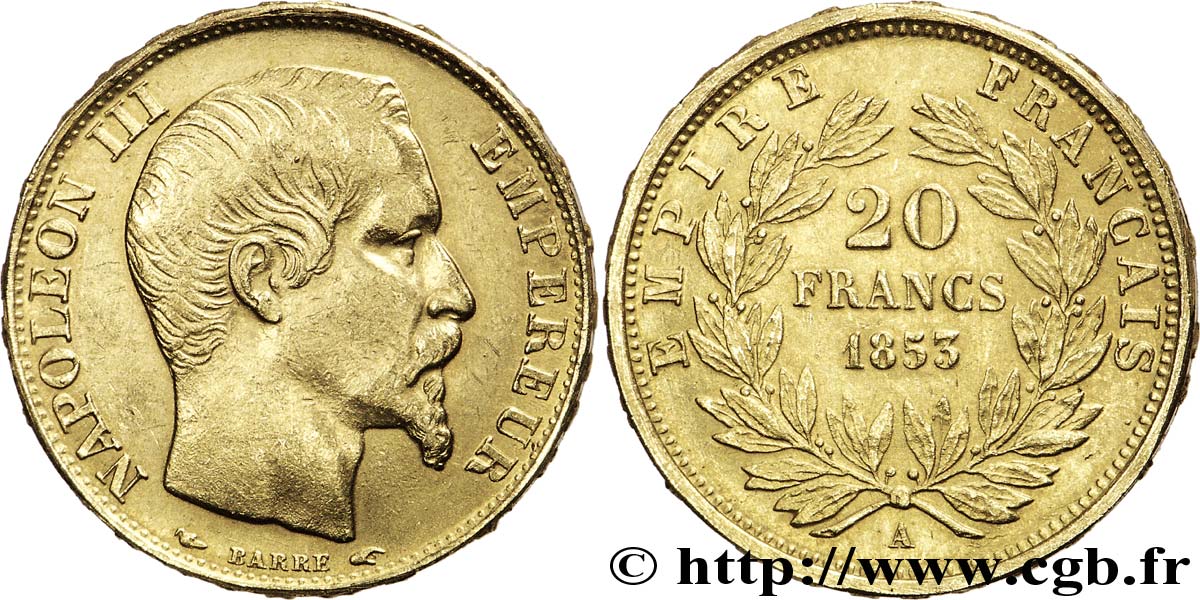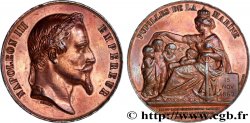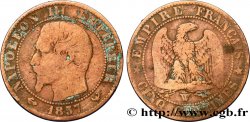v35_0758 - Faux de 20 francs or Napoléon III, tête nue, frappe médaille 1853 Paris F.531/1 var.
MONNAIES 35 (2008)
Начальная цена : 280.00 €
Назначить цену : 600.00 €
Цена реализации : 280.00 €
Количество ставок : 1
Максимальная предлагаемая цена : 555.00 €
Начальная цена : 280.00 €
Назначить цену : 600.00 €
Цена реализации : 280.00 €
Количество ставок : 1
Максимальная предлагаемая цена : 555.00 €
Тип Faux de 20 francs or Napoléon III, tête nue, frappe médaille
Дата: 1853
Монетный двор / Город: Paris
Количество отчеканенных монет: ---
Металл: gold
Проба: 900 ‰
Диаметр: 21,29 mm
Ориентация осей монеты: 12 h.
Вес: 6,45161 g.
Век: en relief : ***** DIEU * PROTEGE * LA * FRANCE
Редкость: R2
Комментарии о состоянии
Légère apparence d’usure tenant plutôt à la fabrication qu’à la circulation
Ссылки в каталоге: :
Лицевая сторона
Аверс: легенда: NAPOLEON III EMPEREUR.
Аверс: описание: Tête nue de Napoléon III à droite ; au-dessous (différent) BARRE (différent).
Обратная сторона
Реверс: легенда: EMPIRE FRANÇAIS.
Реверс: Описание: 20 / FRANCS, en deux lignes dans le champ, au-dessus de 1853, dans une couronne composée de deux branches de laurier nouées en bas ; sous le nœud, la lettre d'atelier A.
Комментарий
L’analyse de l’usure est intéressante car les listels sont francs et aigus, la tranche superbe est vive alors que les plats sont assez mous. On peut en déduire que la monnaie a peu circulé mais a été fabriquée à partir de moulages puis marquée sur la tranche par un moyen mécanique. Il est probable que le faussaire a cherché à réaliser la plus belle tranche possible, peut-être pour faire des échanges dans des rouleaux.
On note un poids très exact et un or apparemment au titre, ce qui permet de dater cette pièce de la crise du bi-métallisme, au tournant du siècle. On reste perplexe sur la négligence d’avoir fabriqué la pièce en médaille : un faussaire ne devrait-il pas avoir à cœur de ne pas attirer l’attention ?
Ce faux est du même atelier que les faux de 1863 BB et 1896 de MONNAIES 33 car ces trois pièces, aux axes erratiques, sont de tranche identique.
On note un poids très exact et un or apparemment au titre, ce qui permet de dater cette pièce de la crise du bi-métallisme, au tournant du siècle. On reste perplexe sur la négligence d’avoir fabriqué la pièce en médaille : un faussaire ne devrait-il pas avoir à cœur de ne pas attirer l’attention ?
Ce faux est du même atelier que les faux de 1863 BB et 1896 de MONNAIES 33 car ces trois pièces, aux axes erratiques, sont de tranche identique.








 Cообщить об ошибке
Cообщить об ошибке Распечатать страницу
Распечатать страницу Отправить мой выбор
Отправить мой выбор Задать вопрос
Задать вопрос Consign / sell
Consign / sell
 Информация
Информация



